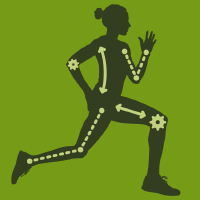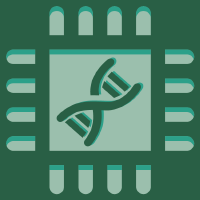Topic Menu
► Topic MenuTopic Editors



Technologies and Sensors for Visually Impaired People
Topic Information
Dear Colleagues,
According to the World Health Organization (WHO), at least 2.2 billion people have a near or distance vision impairment, about 246 million suffer from low vision, and 39 million are blind. Many assistive technologies (ATs) and sensors exist to help visually impaired people be more independent and healthy, as well as improve their participation in education, working, and social life. ATs can also reduce the need of care services, alleviate the burthen on families, and prevent the risk of poverty. On the other hand, ATs are sometimes expensive, even in high-income countries, and complex for the users, with inadequate functional design or cosmetic acceptability. This is often due to the little attention given by researchers and industrial corporations, which are often more attracted by popular mass-market segments. In this topic, we focus on visually impaired people, investigating how new technologies and sensors can support their specific needs. Indeed, different AT devices can support people with visual impairements in a range of tasks or might be focused on a specific task. For example, many applications exploit the variety of sensors included in most smartphones and tablets, such as cameras, accelerometers, GPS, etc., to provide navigation, object recognition, and social interaction services. Moreover, recent advancements in data analysis, machine learning, human–computer interaction, and the development of new actuators (haptic, vibrational, audio, braille, etc.) resulted in an explosion of ATs, including artificial intelligence for communication and translation, eLearning and education, computer vision, virtual and augmented environments (VR/AR), mobile and touch technology, tactile and wearable interfaces, image and Web accessibility, as well as usability, ergonomics, and user centered design of the above research fields. Finally, several ATs are based on the pervasive diffusion of sensors and the Internet of Things (IoT) to help visually impaired people in their everyday life, such as in ambient and assisted living (AAL), while other ATs focus more on providing mechanisms to support caregivers. This topic aims to address technologies and sensors overcoming or easing visual impairements and related topics of interest, which include but are not limited to:
- AT and assistive robotics for visually impaired people;
- AAL, smart environments and IoT for visually impaired people;
- AT and artificial intelligence for visually impaired;
- Virtual and augmented reality for visually impaired;
- Computer vision applications for visually impaired people;
- Bioengineering for visually impaired;
- Auditory and spatial perception of visually impaired people;
- Alternative and augmentative communication for visually impaired people;
- Wearable and haptics for visually impaired;
- Navigation and guidance for visually impaired people;
- Assisted mobility for visually impaired people;
- Accessibility of images, software, web, and social media;
- Safety and security of AT for visually impaired people;
- Inclusive R&D, usability, ergonomics, and user centered design of AT for visually impaired people;
- ATs in education for visually impaired people;
- ATs for visually impaired people in low- and middle-income countries.
Dr. Daniele Croce
Prof. Dr. Laura Giarré
Dr. Domenico Garlisi
Topic Editors
Keywords
- visually impaired
- assistive technologies
- computer vision
- augmented reality
- machine learning
- haptic
- navigation
Participating Journals
| Journal Name | Impact Factor | CiteScore | Launched Year | First Decision (median) | APC |
|---|---|---|---|---|---|

Bioengineering
|
4.6 | 4.2 | 2014 | 17.7 Days | CHF 2700 |

Biomechanics
|
- | - | 2021 | 23.8 Days | CHF 1000 |

Biosensors
|
5.4 | 4.9 | 2011 | 17.4 Days | CHF 2700 |

Robotics
|
3.7 | 5.9 | 2012 | 17.3 Days | CHF 1800 |

Sensors
|
3.9 | 6.8 | 2001 | 17 Days | CHF 2600 |

MDPI Topics is cooperating with Preprints.org and has built a direct connection between MDPI journals and Preprints.org. Authors are encouraged to enjoy the benefits by posting a preprint at Preprints.org prior to publication:
- Immediately share your ideas ahead of publication and establish your research priority;
- Protect your idea from being stolen with this time-stamped preprint article;
- Enhance the exposure and impact of your research;
- Receive feedback from your peers in advance;
- Have it indexed in Web of Science (Preprint Citation Index), Google Scholar, Crossref, SHARE, PrePubMed, Scilit and Europe PMC.

